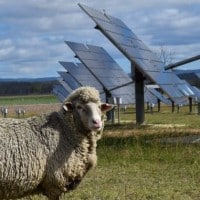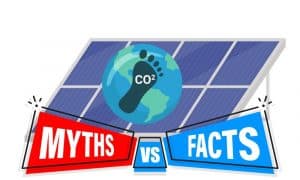University of Queensland is saving $50,000 a year in mowing costs at its Gatton campus solar farm by using sheep to keep the vegetation down.
In May last year, the largest solar photovoltaic (PV) research facility in the southern hemisphere was switched on at Gatton. Comprising of more than 37,000 solar panels, the facility covers a fair bit of ground.
The ABC reports that to mow the grounds used to take 4 days – and cost a significant chunk of change.
Ten sheep were brought in to help cut mowing costs and seem to be enjoying their new digs; a 4.5 hectare section of the facility.
“There’s great feed available for them and the fact that we have solar panels there it also provides really great shading opportunities for them — in really hot weather they can get out of the sun,” says UQ energy and sustainability manager Andrew Wilson.
Given the success of the trial, a further 2.5 hectares will be opened up for the sheep.
It’s not uncommon for livestock to mingle with solar panels. We reported in May that goats and sheep will be used at a solar farm in Japan to help maintain electricity generation at the facility. That scenario goes beyond keeping the grass down – it seems vines growing on fences can throw shadows on some of that plant’s panels, reducing their efficiency.
Renewable energy and agriculture can often go hand-in-hand. Just last week, the Climate Council released a report regarding the renewable energy opportunities available to bush battlers through mixed grazing and electricity generation.
And it’s not just solar power stations where this can be done. At some wind farms across Australia, livestock can be seen contentedly chomping on grassy areas among the turbines, unperturbed by the gentle swooshing of the blades. We’re unaware of any reports of cows suffering from Wind Turbine Syndrome.
One things for sure though, there’s nary a cow to be seen grazing among the electricity generation turbines at the coal-fired Hazelwood Power Station in Victoria; nor sheep in the nearby Morwell open cut coal mine.
Image credit: University of Queensland via ABC.

















































